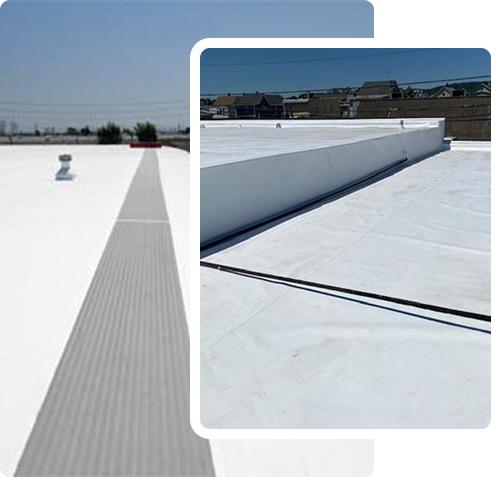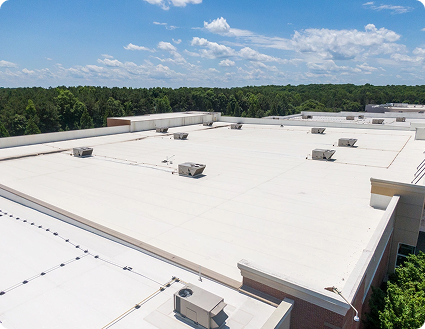How Advanced Roofing’s TPO Roofing Contractors Maximize Roof Lifespan


Why Choose Advanced Roofing’s TPO Roofing Contractors in Florida?
What Makes TPO Commercial Roofing Ideal for Florida's Climate?
How Do TPO Roofing Contractors Extend Roof Lifespan?
Experienced TPO Roofing Contractors understand that durability begins with a precise and professional installation. At Advanced Roofing, we take roof longevity seriously. Our approach includes thorough inspections, custom material selection, heat-welded seams, and targeted flashing work to reduce vulnerabilities. Beyond installation, our experts offer ongoing maintenance plans and inspections tailored to your facility’s specific needs. These scheduled check-ups help detect potential issues early, saving you from costly emergency repairs later. We also recommend protective coatings when appropriate, adding another layer of defense against Florida’s challenging climate. In every step, our TPO specialists prioritize performance, ensuring each roofing system achieves or even exceeds its expected lifespan. It’s all about planning today to protect tomorrow.
The Science Behind TPO Membranes: Built to Last
Top Maintenance Practices for Commercial Flat Roof Repair
Regular maintenance is crucial for extending the life of a commercial flat roofing system. Without consistent care, small issues can quickly turn into major repair jobs, jeopardizing the structure and your investment. At Advanced Roofing, we specialize in proactive solutions designed to catch problems early and preserve the performance of your TPO commercial roofing system. Our team of seasoned TPO Roofing Contractors follows a meticulous inspection and repair process tailored to Florida’s demanding climate.
Here are some of the top maintenance practices we recommend for effective commercial flat roof repair:
Routine Inspections: Schedule semi-annual inspections—especially after storms—to check for seam separations, blisters, or surface damage.
Drainage Management: Ensure drains, gutters, and scuppers are clear of debris to prevent ponding water, which accelerates membrane breakdown.
Surface Cleaning: Remove leaves, dirt, and other debris regularly to avoid water retention and mold growth.
Sealant Checks: Inspect and reseal flashing, pipe boots, and edge details as they are common leak sources in flat roofs.
Thermal Scanning: Use infrared technology to detect hidden moisture beneath the membrane, allowing for precise and early repairs.
Reinforce High-Traffic Areas: Apply walkway pads in frequently accessed sections to prevent foot-traffic-related damage.
Signs Your TPO Roof Needs Professional Repair or Replacement
Pooling Water: Standing water on your flat roof after 48 hours may indicate poor drainage or membrane sagging, leading to leaks.
Cracked or Shrinking Seams : TPO seams can split or pull apart due to UV exposure and thermal expansion, causing water infiltration.
Visible Punctures or Tears : Heavy foot traffic, falling debris, or storms can puncture the membrane, making the system vulnerable to leaks.
Blisters or Bubbling : Trapped moisture beneath the surface often creates bubbles, indicating compromised adhesion and potential water damage.
Discoloration or UV Damage : Fading or chalking of the TPO surface may suggest advanced UV degradation and reduced energy efficiency.
Increased Energy Bills : A spike in cooling costs could mean the reflective surface has deteriorated, forcing HVAC systems to work harder.
Interior Water Stains or Mold : Evidence of water damage inside your building—such as stained ceilings or mold—may signal an unseen roof leak.

